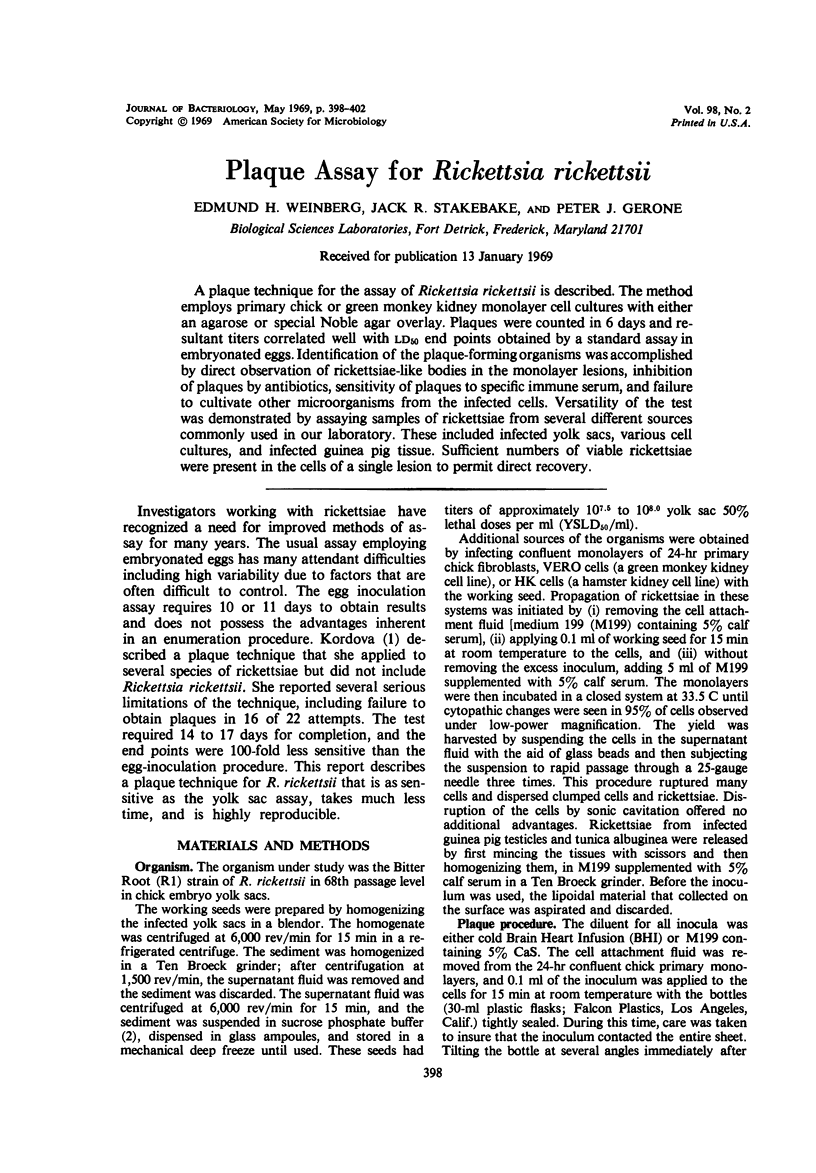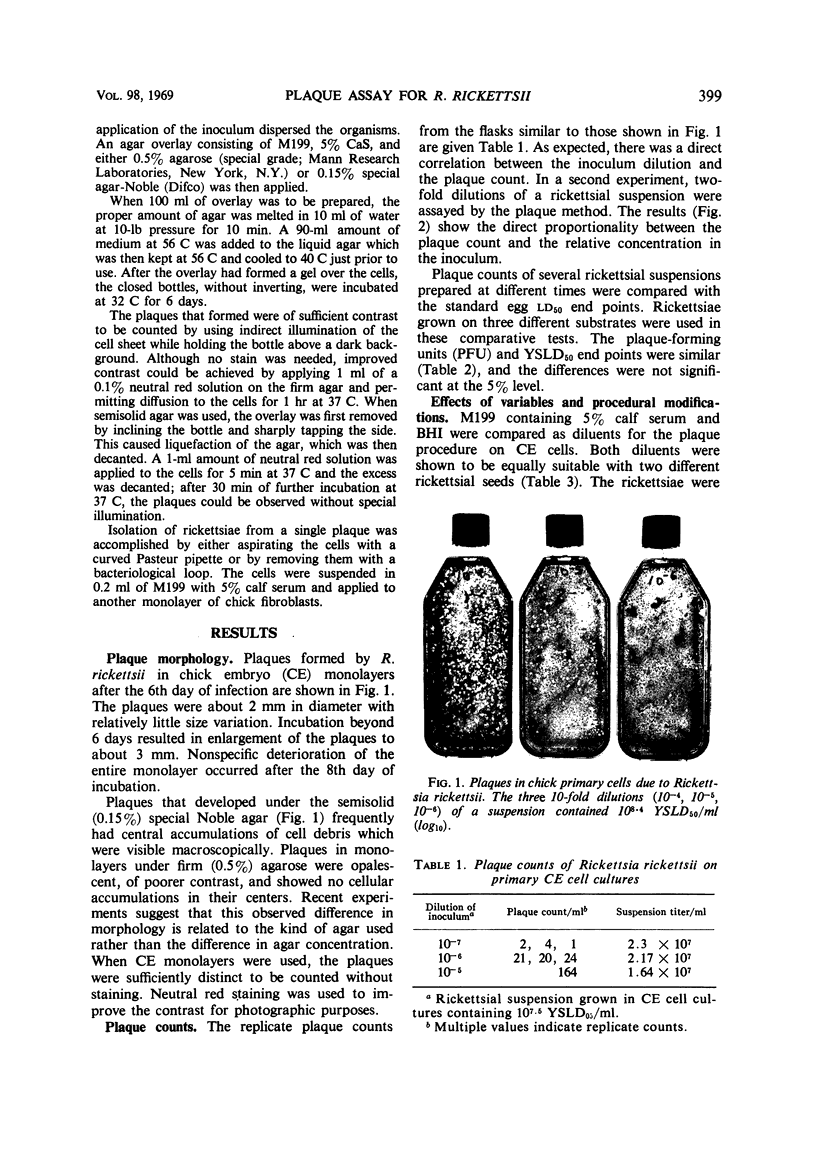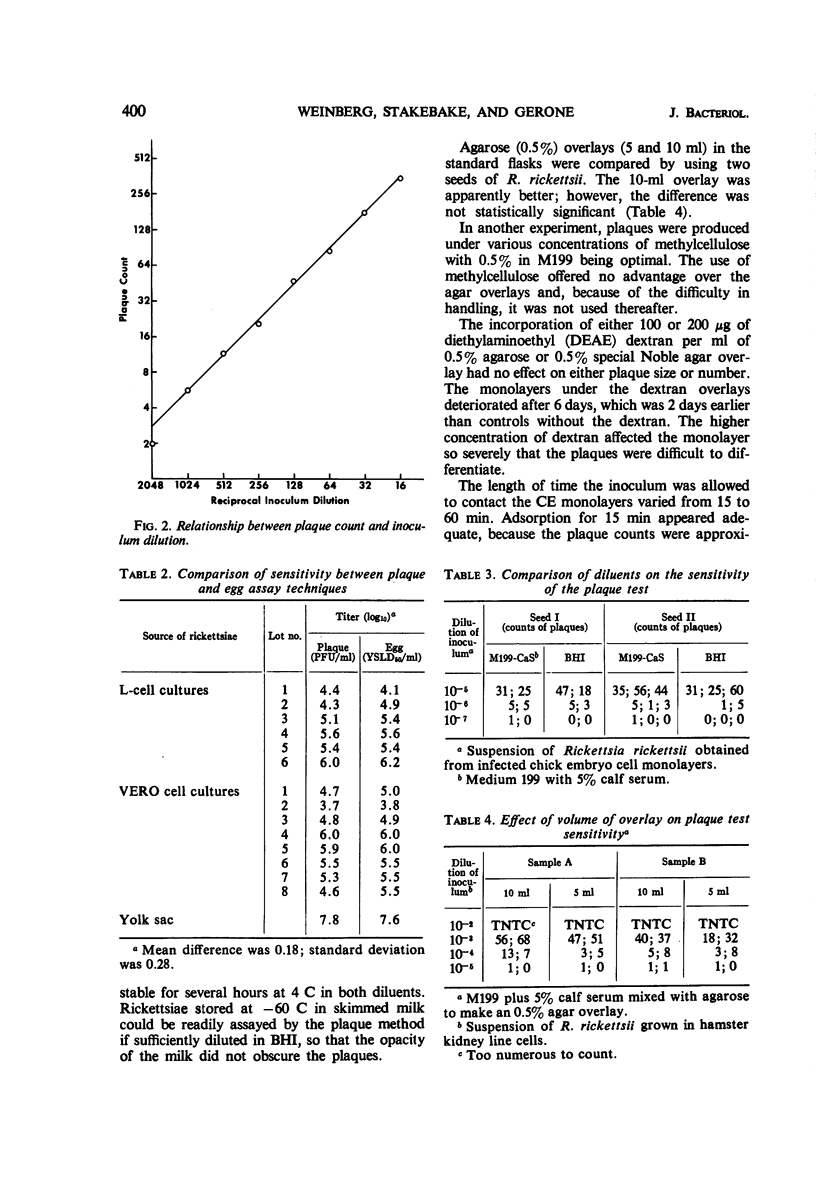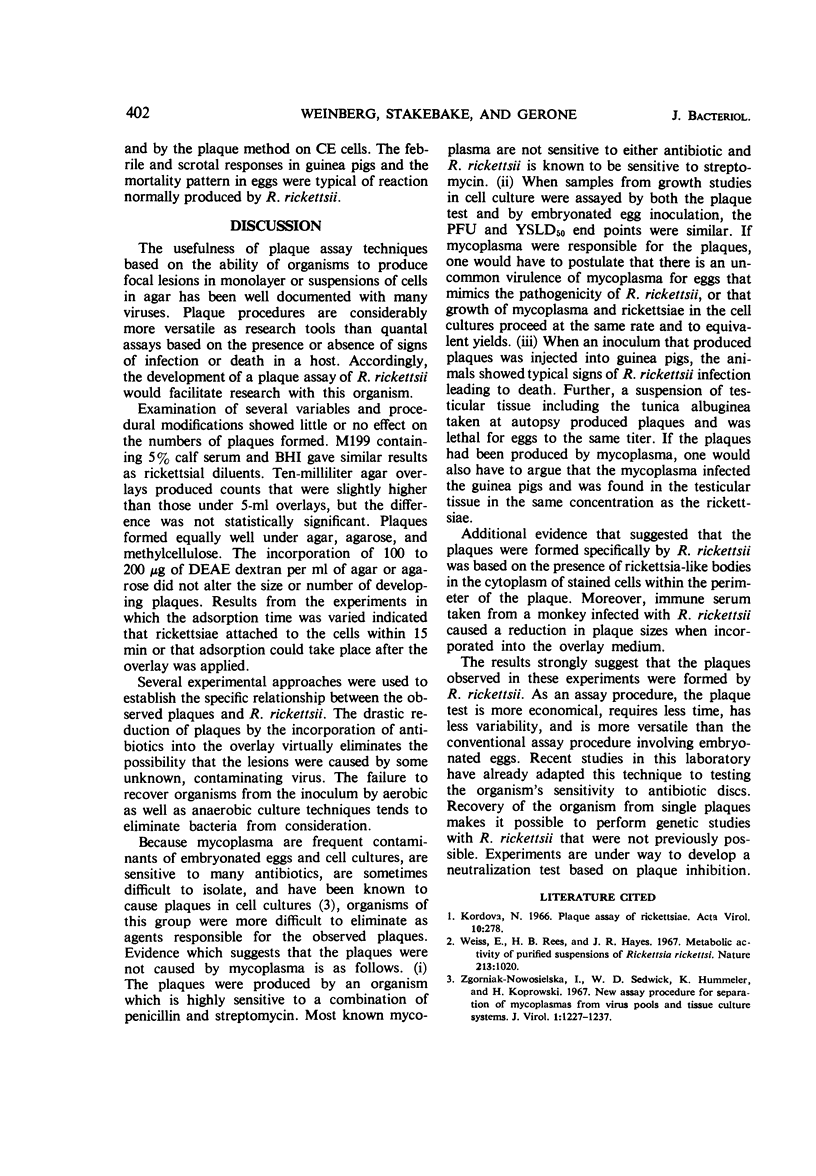Abstract
A plaque technique for the assay of Rickettsia rickettsii is described. The method employs primary chick or green monkey kidney monolayer cell cultures with either an agarose or special Noble agar overlay. Plaques were counted in 6 days and resultant titers correlated well with ld50 end points obtained by a standard assay in embryonated eggs. Identification of the plaque-forming organisms was accomplished by direct observation of rickettsiae-like bodies in the monolayer lesions, inhibition of plaques by antibiotics, sensitivity of plaques to specific immune serum, and failure to cultivate other microorganisms from the infected cells. Versatility of the test was demonstrated by assaying samples of rickettsiae from several different sources commonly used in our laboratory. These included infected yolk sacs, various cell cultures, and infected guinea pig tissue. Sufficient numbers of viable rickettsiae were present in the cells of a single lesion to permit direct recovery.
Full text
PDF




Images in this article
Selected References
These references are in PubMed. This may not be the complete list of references from this article.
- Goodwin C. S., Tyrrell D. A., Head B., Rees R. J. Inhibition of haemaggregation by lepromin and other mycobacterial substances. Nature. 1967 Dec 9;216(5119):1019–1020. doi: 10.1038/2161019a0. [DOI] [PubMed] [Google Scholar]
- Kordová N. Plaque assay of rickettsiae. Acta Virol. 1966 May;10(3):278–278. [PubMed] [Google Scholar]
- Zgorniak-Nowosielska I., Sedwick W. D., Hummeler K., Koprowski H. New assay procedure for separation of mycoplasmas from virus pools and tissue culture systems. J Virol. 1967 Dec;1(6):1227–1237. doi: 10.1128/jvi.1.6.1227-1237.1967. [DOI] [PMC free article] [PubMed] [Google Scholar]



